March 2012 Retail Sales increased 0.8%. Minus autos & parts, retail sales also increased 0.8%. February retail sales were revised down from 1.1% to 1.0%. Retail sales are up 6.5% from the same time last year. Retail sales are reported by dollars, not by volume, so dropping prices often reports as a decline in sales.
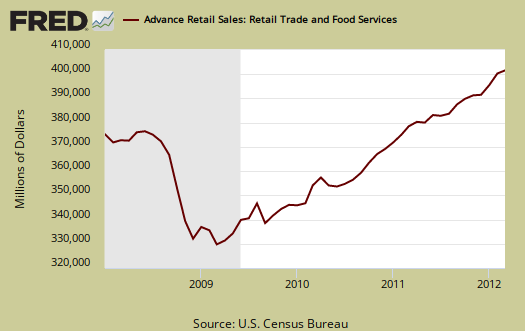
For the quarter, January to March, retail sales increased 6.4% from the January to March time period one year ago.
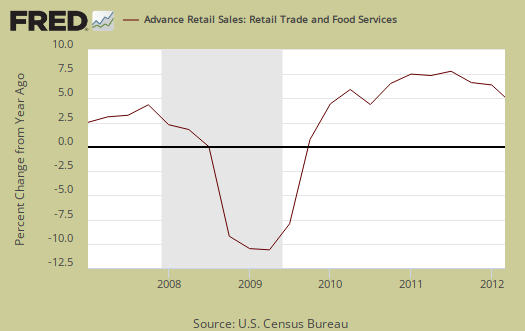
Total retail sales are $411.1 billion for March. Below is the monthly percentage change of retail sales categories. These numbers are seasonally adjusted.
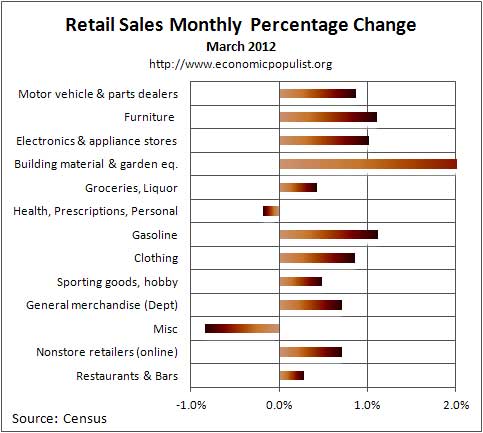
Retail trade sales are retail sales minus food and beverage services. Retail trade sales includes gas, and is up 0.8% for the month, up 6.1% from last year.
As we can see retail sales are up across the board, the growth in retail sales is not just high gas prices. Below is March advance report retail sales by volume.
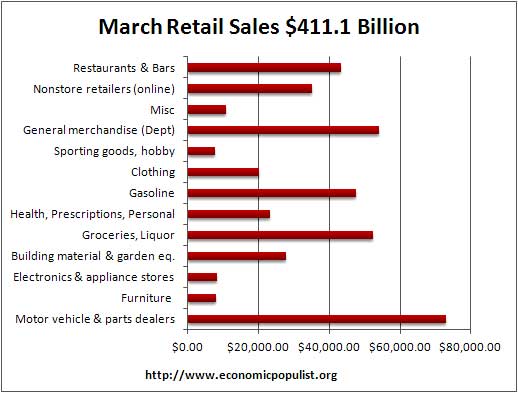
The below chart breaks down seasonally adjusted retail sales by category as a percentage of total March sales. Motor Vehicles & Parts is still the big money, dwarfing even high gas prices. Motor Vehicles & Parts are up 8.3% from this time last year with auto dealers up 8.8%. Electronics stores, on the other hand, while up 1.0% from this month are down, -3.1% from this time last year. Building materials is up a whopping 14.1% from this time last year. Next time you read the hype about Apple, consider the real volume in sales for the economy.
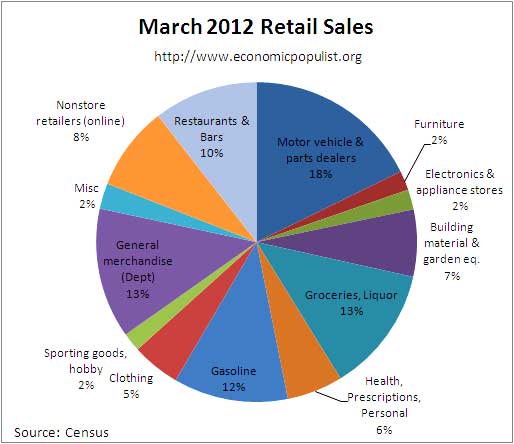
Retail sales correlates to personal consumption, which is about 70% of GDP growth. Yet GDP has inflation removed from it's numbers. This is why Wall Street jumps on these retail sales figures. Below is the graph of retail sales in real dollars, or adjusted for inflation, so one gets a sense of volume versus price increases. To obtain real values, retail sales are deflated using CPI. Below is the quarterly percentage change in real retail sales.
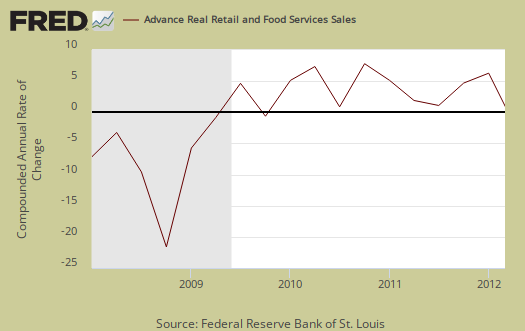
Retail sales are not adjusted for price increases, not reported in real dollars. Real Economic growth adjusts for inflation. Retail sales has variance, margins of error, and is often revised as more raw data comes into the U.S. Department of Commerce (Census division). For example, this report has an error margin of ±0.5%. Data is reported via surveys, and is net revenues of retail stores, outlets. Online retail net revenues are asked in a separate survey of large retail companies (big box marts). This is also the advanced report. To keep the gains in perspective, below is the graph of monthly percentage changes since 2008.
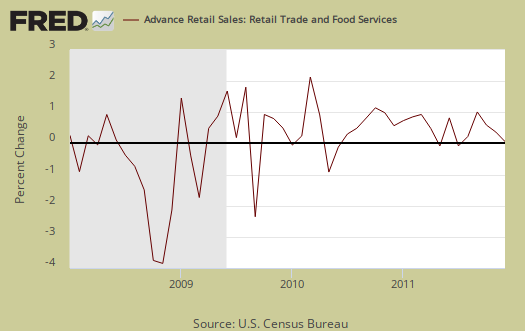
Seasonal adjustments are aggregate and based on events like holidays associated with shopping, i.e. the Christmas rush.
Below is the graph of the annual retail sales percentage change, not adjusted for inflation.
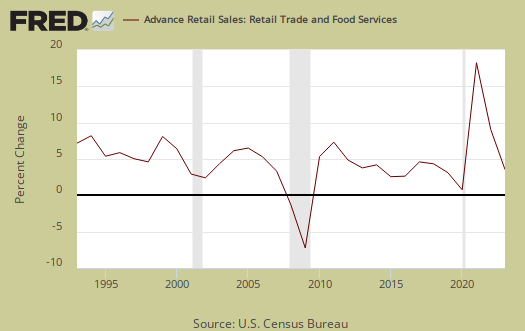
Advance reports almost always are revised the next month as more raw sales data is collected by the Census.

GDP, retail sales and press hype
If we look at the quarterly real graph, retail sales imply ok, but less PCE for Q1 than Q4. It ain't bad and there are other elements which go into PCE, from another report.
That said this "stellar" "blow out" just is not fact, which unfortunately many in the press say. What happens is there are those projecting various economic data and when a government report exceeds their estimates, we get these "blow out" headline buzz. Well, we believe in looking at the data just in comparison to itself and to other macro economic indicators, not what some Goldman Sachs analyst said.
So, this report is ok, it's simply not some incredible retail sales blow out.